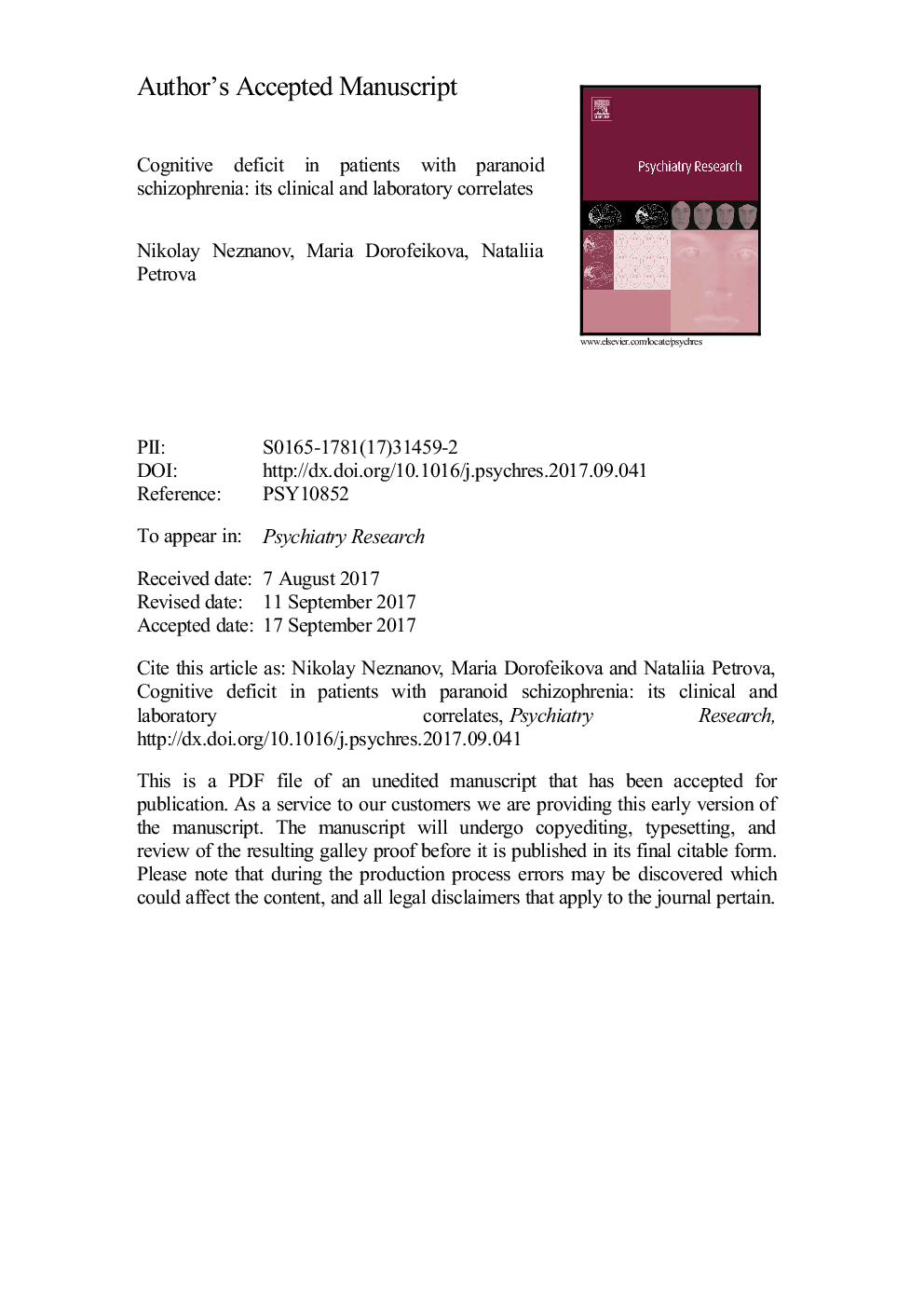ترجمه فارسی عنوان مقاله
کمبود شناختی در بیماران مبتلا به اسکیزوفرنی پارانوئیدی: همبستگی بالینی و آزمایشگاهی آن است
عنوان انگلیسی
Cognitive deficit in patients with paranoid schizophrenia: Its clinical and laboratory correlates
| کد مقاله | سال انتشار | تعداد صفحات مقاله انگلیسی |
|---|---|---|
| 155197 | 2018 | 25 صفحه PDF |
منبع

Publisher : Elsevier - Science Direct (الزویر - ساینس دایرکت)
Journal : Psychiatry Research, Volume 262, April 2018, Pages 542-548

